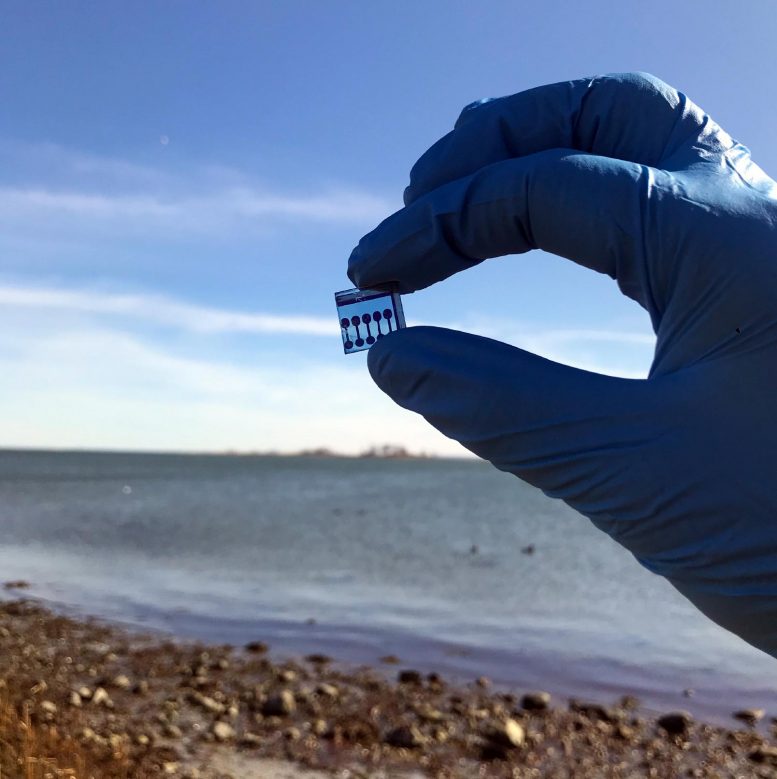
This image shows an organic solar cell, which are likely candidates for underwater applications as they can be made water resistant and perform excellently in low-light conditions. Credit: Allison Kalpakci
There may be many overlooked organic and inorganic materials that could be used to harness sunlight underwater and efficiently power autonomous submersible vehicles, report researchers at New York University. Their research, publishing today (March 18, 2020) in the journal Joule, develops guidelines for optimal band gap values at a range of watery depths, demonstrating that various wide-band gap semiconductors, rather than the narrow-band semiconductors used in traditional silicon solar cells, are best equipped for underwater use.
“So far, the general trend has been to use traditional silicon cells, which we show are far from ideal once you go to a significant depth since silicon absorbs a large amount of red and infrared light, which is also absorbed by water — especially at large depths,” says Jason A. Röhr, a postdoctoral research associate in Prof. André D. Taylor’s Transformative Materials and Devices Laboratory at the Tandon School of Engineering at New York University and an author on the study. “With our guidelines, more optimal materials can be developed.”
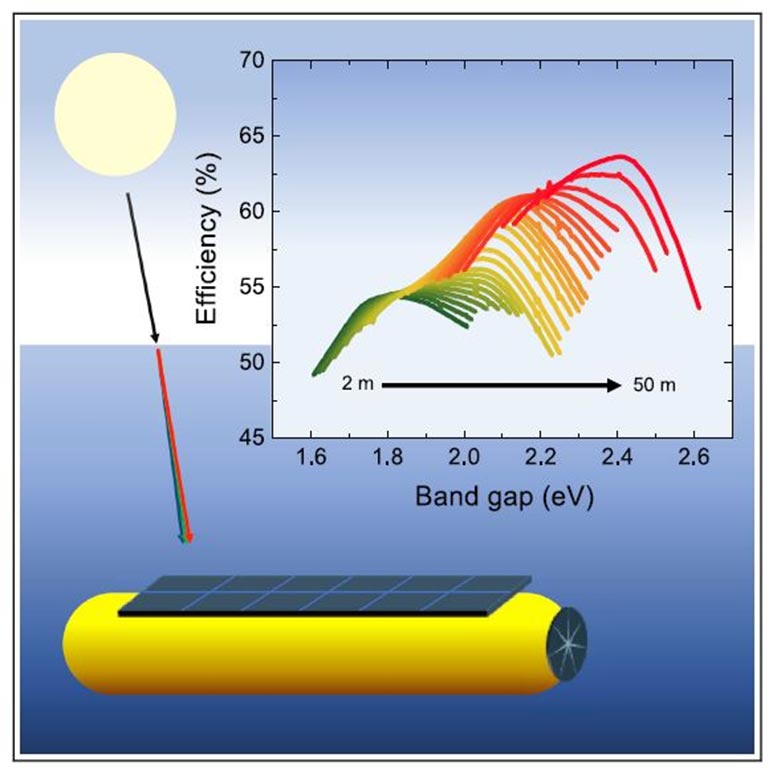
This graphical abstract shows how underwater solar cells can produce useful power at up to 65% efficiency in clearest waters. Credit: Röhr et al./Joule
Underwater vehicles, such as those used to explore the abyssal ocean, are currently limited by onshore power or inefficient on-board batteries, preventing travel over longer distances and periods of time. But while solar cell technology that has already taken off on land and in outer space could give these submersibles more freedom to roam, the watery world presents unique challenges. Water scatters and absorbs much of the visible light spectrum, soaking up red solar wavelengths even at shallow depths before silicon-based solar cells would have a chance to capture them.
Most previous attempts to develop underwater solar cells have been constructed from silicon or amorphous silicon, which each have narrow band gaps best suited for absorbing light on land. However, blue and yellow light manages to penetrate deep into the water column even as other wavelengths diminish, suggesting semiconductors with wider band gaps not found in traditional solar cells may provide a better fit for supplying energy underwater.
To better understand the potential of underwater solar cells, Röhr and colleagues assessed bodies of water ranging from the clearest regions of the Atlantic and Pacific oceans to a turbid Finnish lake, using a detailed-balance model to measure the efficiency limits for solar cells at each location. Solar cells were shown to harvest energy from the sun down to depths of 50 meters in Earth’s clearest bodies of water, with chilly waters further boosting the cells’ efficiency.
The researchers’ calculations revealed that solar cell absorbers would function best with an optimum band gap of about 1.8 electronvolts at a depth of two meters and about 2.4 electronvolts at a depth of 50 meters 164 feet). These values remained consistent across all water sources studied, suggesting the solar cells could be tailored to specific operating depths rather than water locations.
Röhr notes that cheaply produced solar cells made from organic materials, which are known to perform well under low-light conditions, as well as alloys made with elements from groups three and five on the periodic table could be ideal in deep waters. And while the substance of the semiconductors would differ from solar cells used on land, the overall design would remain relatively similar.
“While the sun-harvesting materials would have to change, the general design would not necessarily have to change all that much,” says Röhr. “Traditional silicon solar panels, like the ones you can find on your roof, are encapsulated to prohibit damage from the environment. Studies have shown that these panels can be immersed and operated in water for months without sustaining significant damage to the panels. Similar encapsulation methods could be employed for new solar panels made from optimal materials.” Now that they have uncovered what makes effective underwater solar cells tick, the researchers plan to begin developing optimal materials.
“This is where the fun begins!” says Röhr. “We have already investigated unencapsulated organic solar cells which are highly stable in water, but we still need to show that these cells can be made more efficient than traditional cells. Given how capable our colleagues around the world are, we are sure that we will see these new and exciting solar cells on the market in the near future.”
Reference: “Efficiency Limits of Underwater Solar Cells” by Jasmine Y. Y. Sze, Aleksandar P. Ivanov, Anthony E. G. Cass and Joshua B. Edel,, 18 March 2020, Joule.
DOI: 10.1016/j.joule.2020.02.005
This work was supported by New York University.


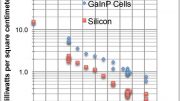


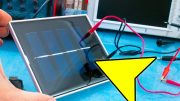

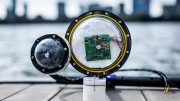
Be the first to comment on "More Efficient Underwater Solar Cells With Optimal Materials"